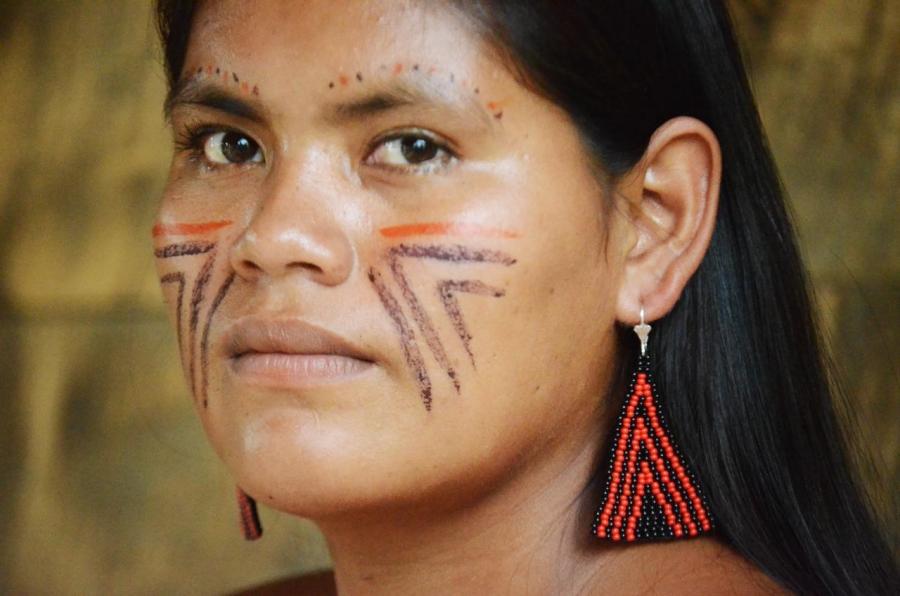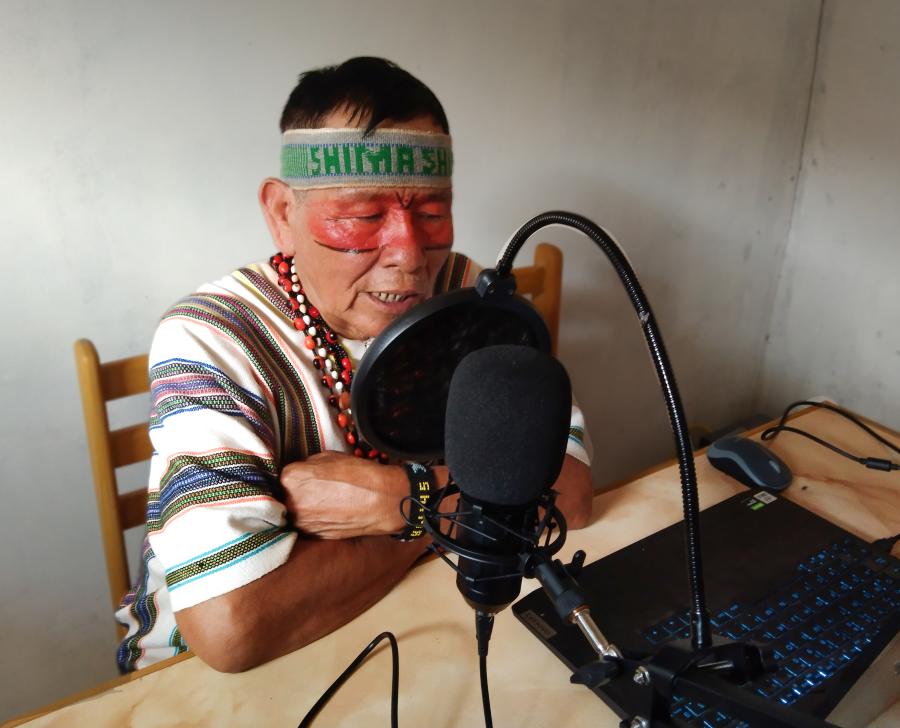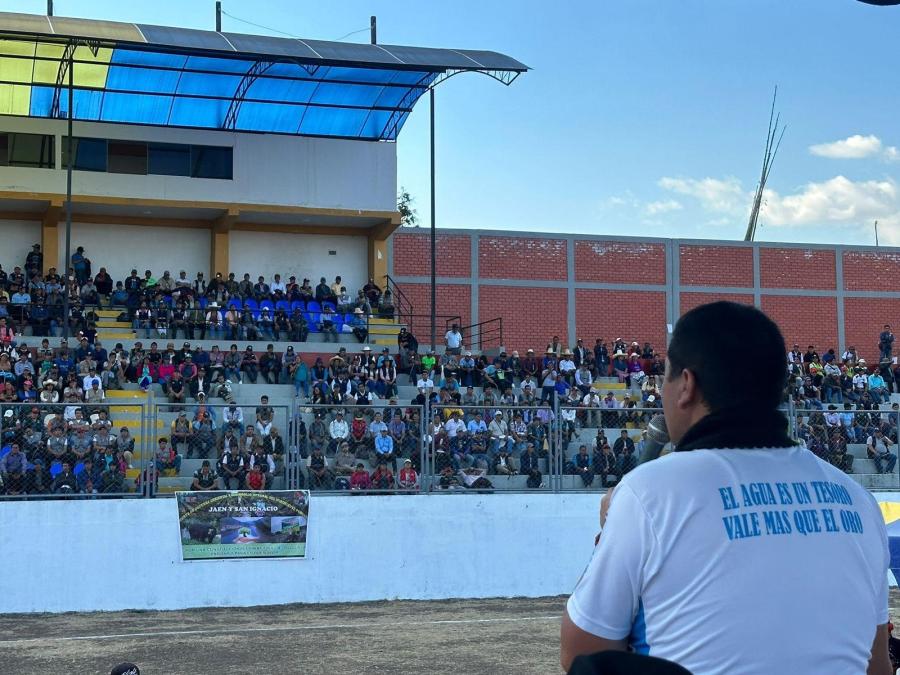Until recently, anthropologists routinely characterized the Aymara of the altiplano (high Andean plateau) around Lake Titicaca in southern Peru as almost pathologically inflexible and fatalistic. Yet during the last few decades, these people, who live in a flood- and drought-prone region at an altitude of 12,500 ft., have shown a remarkable ability to adapt to rapidly changing conditions.
Since pre-Inca times, the Aymara have relied on subsistence agriculture - mainly numerous varieties of potatoes, and some animal husbandry. Their basic social and political unit has been the ayllu originally a patrilineal kinship group holding land in common.
When Spanish colonial administrators imposed individual ownership of the land the ayllu survived, though the Catholic fiesta system picked up its integrative functions and sponsors of the numerous yearly fiestas assumed many political responsibilities. Adoption of Catholicism has been highly selective, however, and no family would think of planting its crops without giving proper ceremonial homage to the earth goddess Pachamama. When in need of curing or magic, they still turn to a hierarchy of shamans.
Trading with other ecological zones has been practiced for millennia, and consumer goods were introduced as early as the Colonial period, but by and large, contact outside the altiplano was extremely restricted. Isolated from Spanish and mestizo influence by formidable terrain, a lack of roads, language and culture barriers, and a well-justified fear of outsiders, the Aymara have maintained a relatively closed social and economic system.
Transition from Subsistence Agriculture to a Money Economy
Since the mid-1950s, much of the Aymara's social and economic system has rapidly and radically changed. Some of this change derived from population pressure. With all of the arable land already intensively in use, survival by subsistence agriculture alone was severely threatened in some communities. For example, in Soqa, an island community near the western shore of the lake with no possibility of expanding its agriculture base, population showed signs of outgrowing the productive capacity of the land three decades ago. In other communities, especially those closer to roads and towns, the increase in available consumer goods became a powerful magnet, drawing formerly conservative farmers to change. Whether the stimulus was a shortage of land or the availability of gas stoves, factory-made clothes, radios and sewing machines, the effect was the same: the Aymara needed money.
A 1963 study by Hickman suggested that the average family income at that time was $37 per year. This does not, of course, mean that the people were exceptionally "poor." Rather it reveals that subsistence agriculture was still supplying virtually all their needs, and they had little use for cash. When the necessity of entering the money economy became increasingly obvious, several strategies were available. Some people could play in the brass bands that accompanied fiesta dancers, some could become truck drivers or some could become craftsmen, for example, making the pressed-wool bowler hats that are de rigueur for Aymara women. These individual enterprises, however, could play only a minor role in a massive transformation involving hundreds of thousands of people.
Cattle Fattening, Permanent Migration and Circular Migration
For the vast majority, three options were open for entering the money economy. Almost universally, the first option chosen was cattle fattening. This involves buying scrawny cattle raised in the barren regions away from the lake, fattening them on the stalks of crops and on lake weed for nine or ten months, and reselling them for slaughter at a profit. If possible, at least two bulls are purchased because the animals are also used for plowing. In some communities with access to their own lake weed, cattle fattening can bring in several hundred dollars a year. Communities away from the lake, which have to purchase lake weed as fodder, earn much less.
Permanent migration to the cities on the coast is a second option, but the need to connect with existing city networks, the lack of full-time jobs, the prospect of living in extremely poor slums and the trauma of leaving home and family limit the number who choose this as a solution. Neither cattle fattening nor permanent migration brings much change to the altiplano: in the first case, peasants need never travel more than a few score miles from their homes; in the latter case, they never return.
The third option, circular migration, has stimulated enormous social, political and economic change. Coastal development offers many short-term jobs, mainly in construction and agriculture. For example, in the rice fields of Camaná, developed on the arid coast with the help of Israeli advisors, it is possible to work about four months a year during planting and harvest. This option has allowed men to keep their land and families in the altiplano while working for wages. In some communities virtually all the men will spend from two to five months a year on the coast. Such migration, which requires a knowledge of Spanish hitherto unneeded, brings new values and new consumer demands into Aymara culture.
Social, Political and Religious Change
The gradual replacement of the autonomous ayllu with a modern community structure has been one of the more significant changes for the Aymara. Since elected community leaders now have direct and formal ties to the provincial governor and the regional military commander, the Aymara have become increasingly integrated into the national political system. The resulting dialogue has brought public schools and health clinics to formerly remote areas.
One curious result of the secularization of local government has been the emergence of a Protestant elite in some communities. As long as the Aymara were supported almost entirely by subsistence agriculture, there was little need for interaction with the mestizo community, and as long as leadership was oriented around the Catholic fiesta system, there was neither the need nor possibility for Protestant political power to emerge. However, a speaking knowledge of Spanish and the ability to read and write have become increasingly important, and many communities have turned to Aymara Seventh Day Adventists for leadership. The Adventists started their own schools when first missionized around 1915 and thus have a three-generation educational head start. While practicing Adventists comprise only about 10 percent of the Aymara population in this region, in many communities they hold the highest leadership positions.
The beginning of the 1980s saw an end to the construction boom on the coast which had offered skilled and semi-skilled employment to many Aymara men. Since the Aymara have grown dependent on wages, they must continue to leave the altiplano for work, but increasingly they must work in lower-paying unskilled jobs. When this is combined with the effects of inflation, real wages have often dropped drastically. For example, in 1976 an agricultural worker earned about $US 3.80 a day; by 1984 that had dropped to less than $2. A bricklayer who earned $4-$10 in 1976 would earn only from $3-$5 in 1984. The length of time men spend on the coast has also declined. Within families, however, some of this loss has been regained by increasing female participation, especially during their teen years, in wage labor on the coast.
The Results of Recent Drought and Flood
Many new changes were set in motion by the "emergency" of 1983 and 1984. Rains normally expected in late November or December did not start until March, and then they came with such profusion that the initial drought turned into a flood. Many Aymara lost much of their yearly crop. People were forced to sell livestock for cash to buy food, with long-term disastrous results. For example, in one community the average family livestock holdings were about six head of cattle and 55 sheep in 1976; in 1985 the average holdings were reduced to two head of cattle and 10 sheep. Since the price of livestock was extremely cheap during the drought, and very high afterward, it has been difficult for these families to rebuild their herds. As a result, labor formerly done with draft animals is now accomplished by hand.
Another effect of the "emergency" was that many Aymara became more integrated into the framework of government services. Development projects that were previously rejected as intrusions have now been welcomed by those who do not want to be left out of government food distributions. Not all of these development projects are successful. A study by Winifred Mitchell of a "Mother's Club" imposed through government change agents shows that the club created considerable dissension while providing the people with little that was useful. Nevertheless, such development organizations may encourage greater participation by women in wage labor, especially as domestics, despite traditional stereotypes of women as nonproductive and as repositories of family virtue.
The Aymara's future will depend on the availability of jobs on the coast, on the weather and other factors not within their control. But these people have already shown a remarkable ability to monitor their changing environment, examine various options and strategies and make rational adaptive responses.
Article copyright Cultural Survival, Inc.



